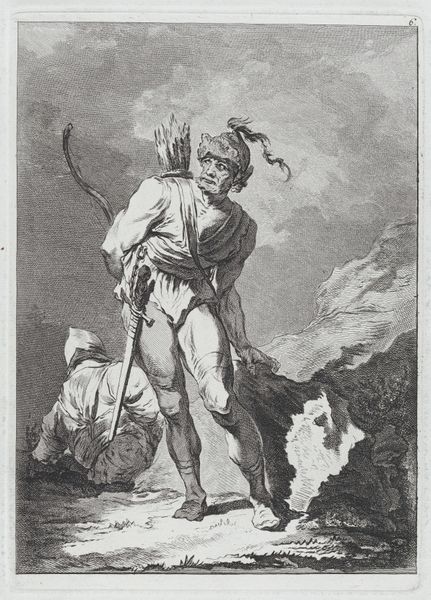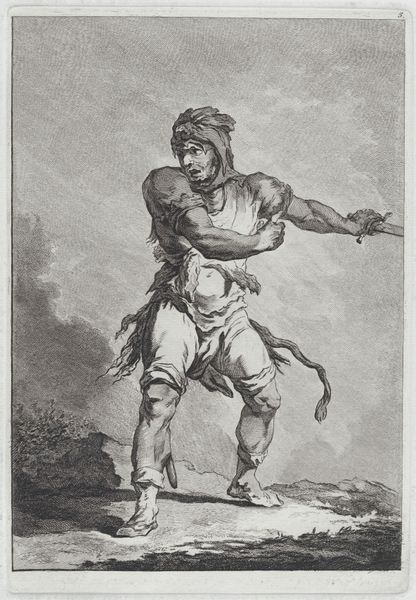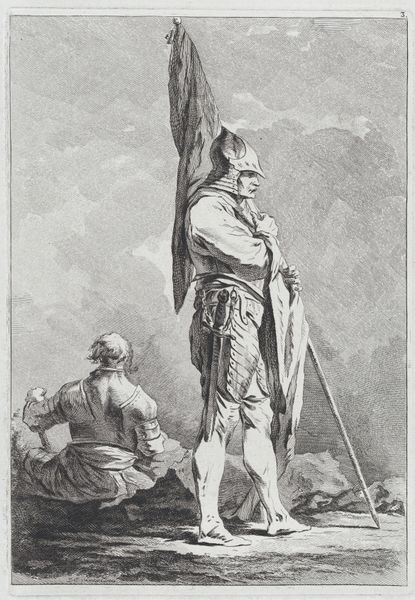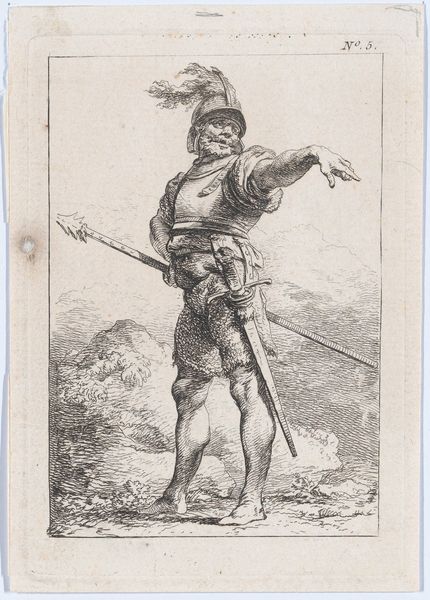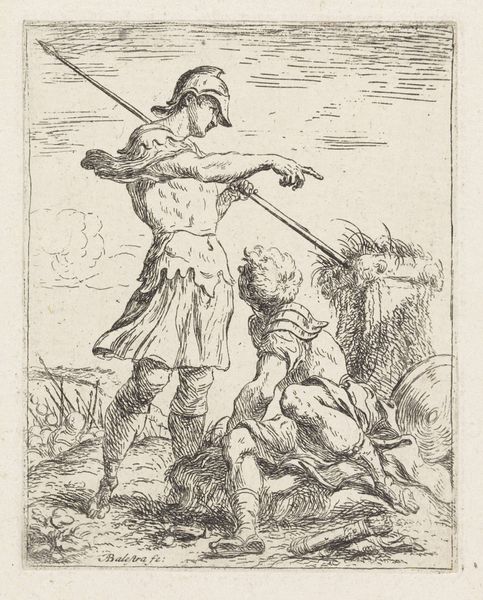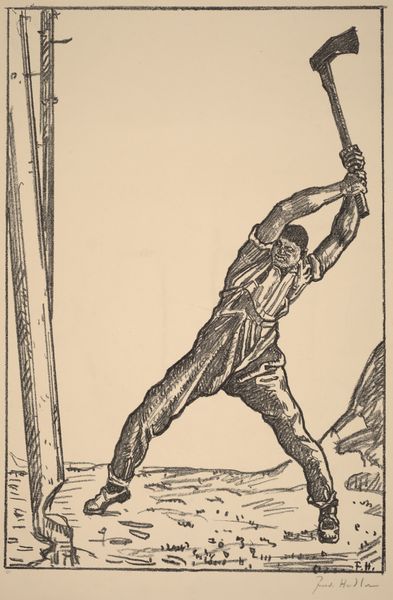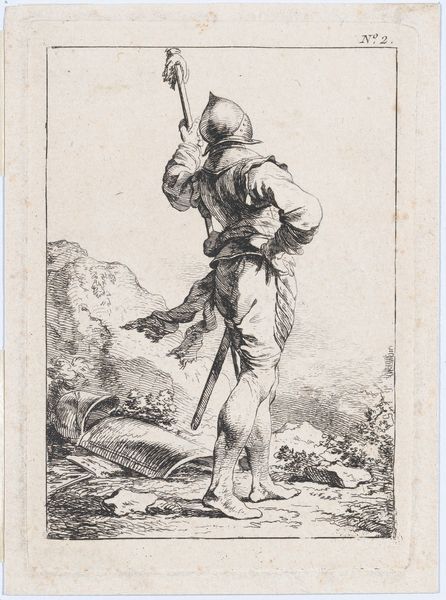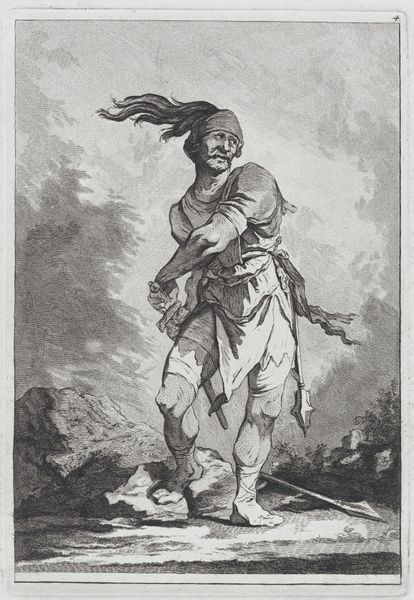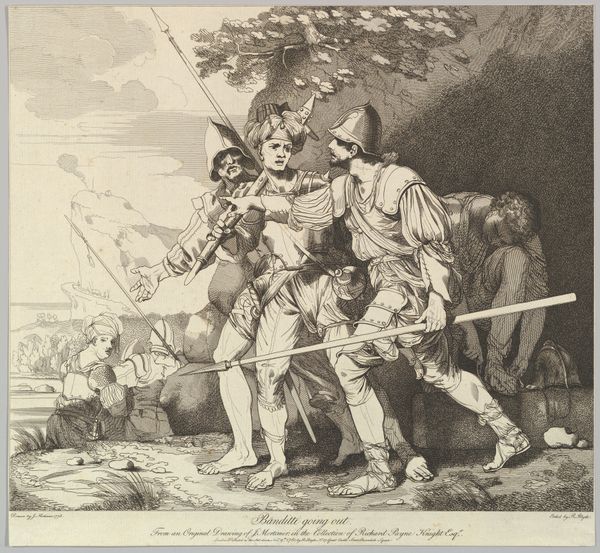
Soldier Wielding a Weapon, Seen from Behind 1764
0:00
0:00
Dimensions: Sheet: 18 1/16 × 11 11/16 in. (45.8 × 29.7 cm)
Copyright: Public Domain
Curator: Welcome! Today, we’re observing “Soldier Wielding a Weapon, Seen from Behind,” an engraving completed in 1764 by Matthias Pfenninger, here at the Metropolitan Museum of Art. Editor: He’s massive. Intimidating even though we can only see his back. There's such a primitive, brutal force captured in that pose. Curator: Yes, Pfenninger’s technique lends itself well to the figure’s imposing nature. Notice how the dynamism in the curved lines composing the background evokes the soldier’s energy, contrasting beautifully with the more deliberate lines that define the figure itself. Editor: That weapon he’s holding, though! It looks like an axe but feels more like a pickaxe, given that point at the back. It certainly evokes a laboring class made dangerous and ready to overturn any settled order. Considering its sharp and jagged design, and Pfenninger’s history-painting influences, would it be safe to say that that instrument symbolizes an act of some violence against established power? Curator: That’s very insightful. This period did, after all, wrestle quite frequently with authority and revolution, and Pfenninger may very well be expressing the spirit of that turmoil. His choice to position the figure with his back turned to the viewer also disrupts expectations for heroic portraiture. Instead of nobility or virtue, the subject offers pure potentiality—of violence, action, resolve. Editor: It is compelling, that denial. As we confront a figure in anticipation of his move, Pfenninger makes us part of his story and symbols: his arrows, suggesting intent; his weapon, an emblem of potential conflict. Curator: Exactly. The engraving process itself, the strategic use of line, creates the figure’s form. Pfenninger focuses the tonal gradations strategically, heightening contrast to dramatize light falling across his shoulders. It speaks to form following force. Editor: I leave today considering the meaning behind such representation: a figure representing struggle for recognition and expression, even amid conflict and aggression. It underscores how artistic form can make meaning of those forces in history. Curator: Indeed. An intriguing intersection of symbol and artistic execution, resulting in this intense expression!
Comments
No comments
Be the first to comment and join the conversation on the ultimate creative platform.



